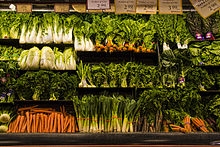
Features
Efficiency
Energy
Cold climate greenhouse piloting infrared heating to feed community
November 15, 2012 By Brandi Cowen
 New Dawn Enterprises and the Eskasoni First Nation hope that their cold climate greenhouse addresses nutritional challenges facing the community.
New Dawn Enterprises and the Eskasoni First Nation hope that their cold climate greenhouse addresses nutritional challenges facing the community. A greenhouse in Sydney River, Cape Breton, is experimenting with an infrared heating system that could allow growers in northern climates to produce in an energy efficient manner all year-round.
New Dawn Enterprises developed the 1,800 square foot cold climate greenhouse facility in collaboration with the Eskasoni First Nation community. The community’s location poses several nutritional challenges that the project seeks to address, including:
- combating an obesity and diabetes rate four times the provincial average
- a very limited supply of arable land available on reserve
- a growing population increasingly requiring land for housing and infrastructure
- a short growing season that is often unreliable
Using Forgeron Infra-Red System Technology (FIRST) developed by Alphonsus Forgeron, the greenhouse is growing a variety of test crops, including chard, peas, onions, spinach, lettuce, cabbage and cauliflower, as well as herbs such as bouquet dill.
The infrared heating system can reduce costs by anywhere from 40 to 60 per cent compared to conventional heating systems. Big savings are achieved by reducing the cost of electricity for re-circulating fans and overhead air ducts to virtually nil; the system heats everything below the IR headers without the waste associated with heating the ceiling.
“Because of the infrared heat, the plant leaves and soil are heated, allowing the greenhouse to operate at much lower temperatures than is now maintained in conventional greenhouses, which cannot guarantee to keep the soil and leaves from freezing,” explained Forgeron. “This lowering of leaf and soil temperatures is possible, knowing that at first morning light, the leaf temperatures can be quickly brought up to growing temperatures, since the infrared heat does not need to heat the air inside the greenhouse, but only the leaves and soil.”
These conditions allow the greenhouse to operate at lower heat and humidity levels, offering the added benefit of curbing bacterial growth.
The first phase of the Sydney River project is now underway. Future phases will expand the project into a 10,000 square foot greenhouse, and ultimately bring cold climate greenhouse growing to other communities located between 45 and 70 degrees latitude.
Print this page